HESI V1 2018 EXIT EXAM
Document Content and Description Below
HESI V1 2018 EXIT EXAM HESI V1 2018 EXIT EXAM 2. A client who is admitted to the care unit with syndrome of inappropriate antidiuretic hormone (SIADH) has developed osmotic demyelination. Whic... h intervention should the nurse implement first? A) Patch one eye. B) Evaluate swallow. C) Reorient often. D) Range of motion. Answer: • B. Evaluate swallow. Syndrome of inappropriate antidiuretic hormone (SIADH), causes excess water reabsorption. This causes hemodilution and subsequently, hyponatremia. If uncorrected, hyponatremia results into osmotic demyelination. One of the earliest symptoms of osmotic demyelination is dysphagia (difficulty in swallowing). Thus the nurse should evaluate the client's swallow reflex. 3. The nurse is preparing a client who had a below-the-knee (BKA) amputation for discharge to home. Which recommendations should the nurse provide this client? (Select all that apply) A) Wash the stump with soap and water. B) Avoid range of motion exercise. C) Apply alcohol to the stump after bathing. D) Inspect skin for redness. E) Use a residual limb shrinker. • Rationale: Several actions are recommended for home care following an amputation. The skin should be inspected regularly for abnormalities such as redness, blistering, or abrasions. A residual limb shrinker should be applied over the stump to protect it and reduce edema. The stump should be washed daily with a mild soap and carefully rinse and dried. The client should avoid cleansing with alcohol because it can dry and crack the skin. Range of motion should be done daily. 4. After 2 days treatment for dehydration, a child continues to vomit and have diarrhea. Normal saline is infusing and the child’s urine output is 50ml/hour. During morning assessment, the nurse determines that the child is lethargic and difficult to arouse. Which should the nurse implemented? A) Increase the IV fluid flow rate. B) Review 24 hour intake and output. C) Obtain arterial blood gases. D) Perform a finger stick glucose test. D. Perform a finger stick glucose test Due to the vomiting and diarrhea, the child has not digested or absorbed glucose. The infusion of normal saline also does not contain glucose. Therefore, the child is likely to deplete their glucose stores and fall into hypoglycemia. The signs of hypoglycemia include lethargy and loss of consciousness. Thus, the nurse should perform a finger stick glucose test, to rule out hypoglycemia. 6. A male client with an antisocial personality disorder is admitted to an in patient mental health unit for multiple substance dependency. When providing a history, the client justifies to the nurse his use of illicit drugs. Based on this pattern of behavior, this client’s history is most likely to include which finding? A) Multiple convictions for misdemeanors and Class B felonies B) Delusions of grandiosity and persecution. C) Suicidal ideations and multiple attempts. D) Photos and panic attacks when confronted by authority figures. 7. An older client is admitted for repair of a broken hip. To reduce the risk for infection postoperative period., which nursing care intervention should the nurse include the client’s plan of care? (Select all that apply) A) Administer low molecular weight heparin as prescribed. B) Teach client to use incentive spirometer every 2 hours while awake. C) Remove urinary catheter as soon as possible and encourage voiding. D) Maintain sequential compression devices while in bed. E) Assess pain level and medicate PRN as prescribed. 9. A client with arthritis has been receiving treatment with naproxen and now reports ongoing stomach pain, increasing weakness, and fatigue. Which laboratory test should the nurse monitor? A) Serum Calcium. B) Erythrocyte sedimentation rate. C) Osmolality. D) Hemoglobin. 10. A client with bacterial meningitis is receiving phenytoin. Which assessment finding indication to the nurse that the client is experiencing a therapeutic response to the phenytoin? A) Increased time of ambulation between periods of rest. B) Decrease in intracranial pressure and cerebral edema. C) Absence of seizure activity for the duration of treatment. D) Normal electroencephalogram after drug administration. .............CONTINUED [Show More]
Last updated: 1 year ago
Preview 1 out of 19 pages
Instant download

Instant download
Also available in bundle (1)
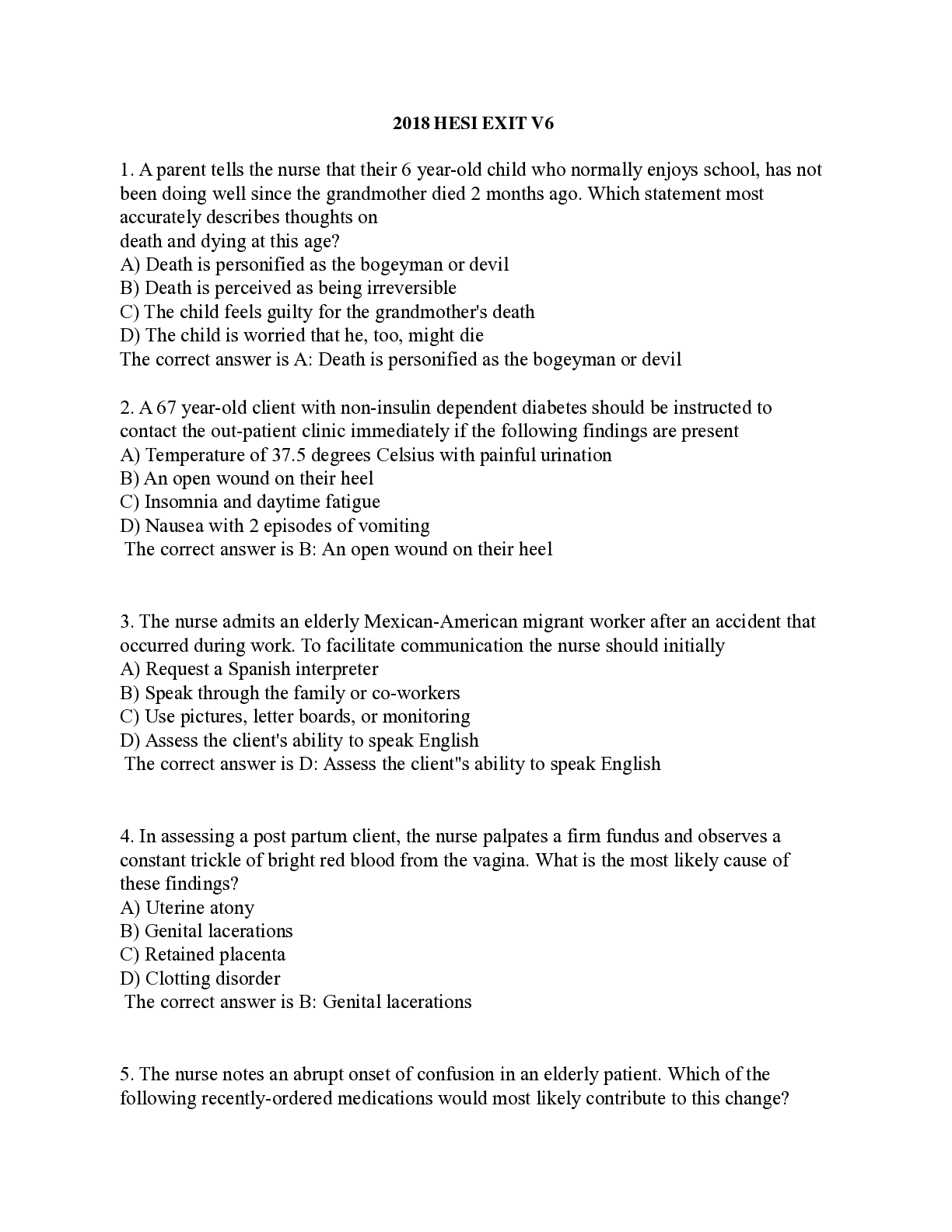
2018 HESI EXIT V1-V6 ; Questions and Answers
2018 HESI EXIT V1-V6 ; Questions and Answers
By YourTutor 3 years ago
$65.5
6
Reviews( 0 )
Document information
Connected school, study & course
About the document
Uploaded On
Jan 27, 2021
Number of pages
19
Written in
Additional information
This document has been written for:
Uploaded
Jan 27, 2021
Downloads
0
Views
91

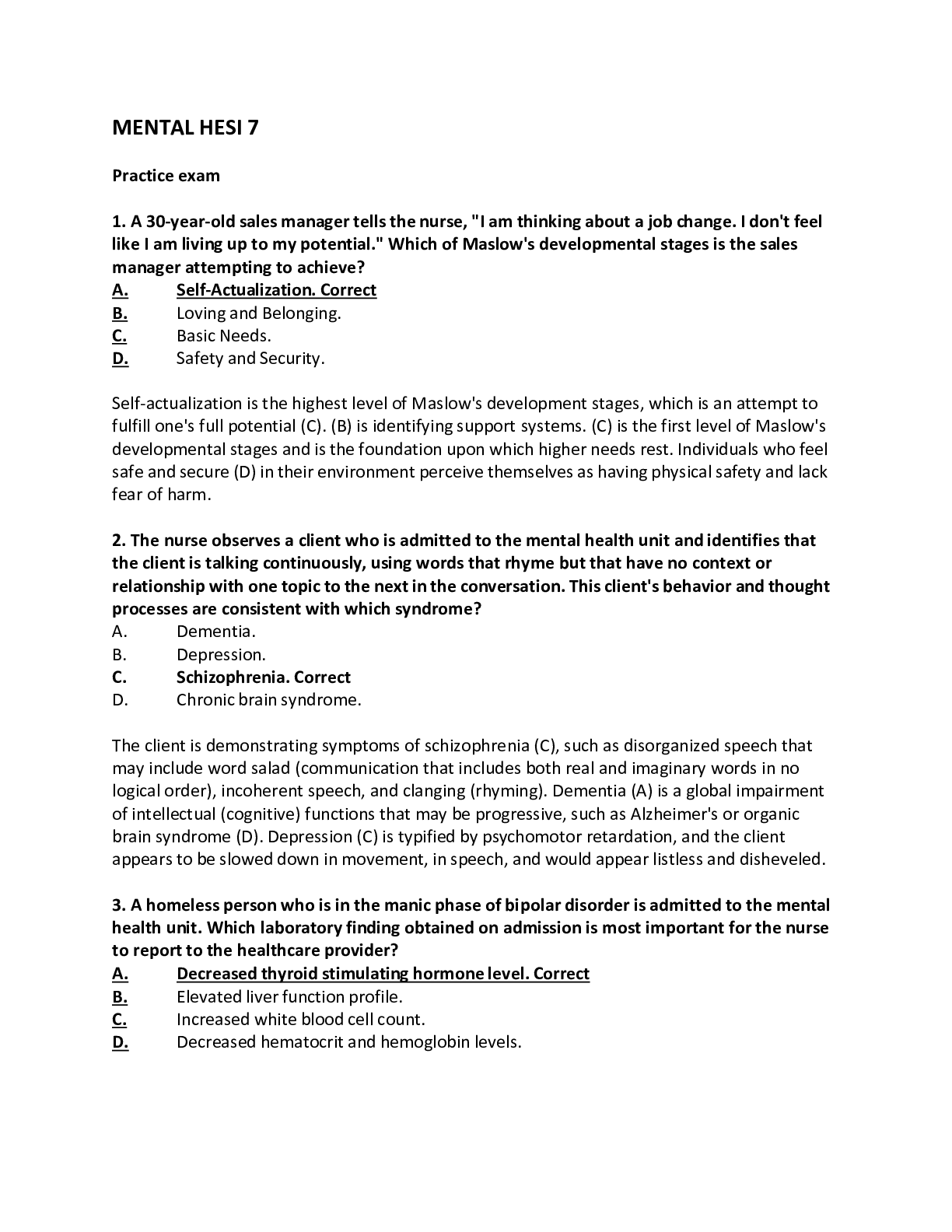
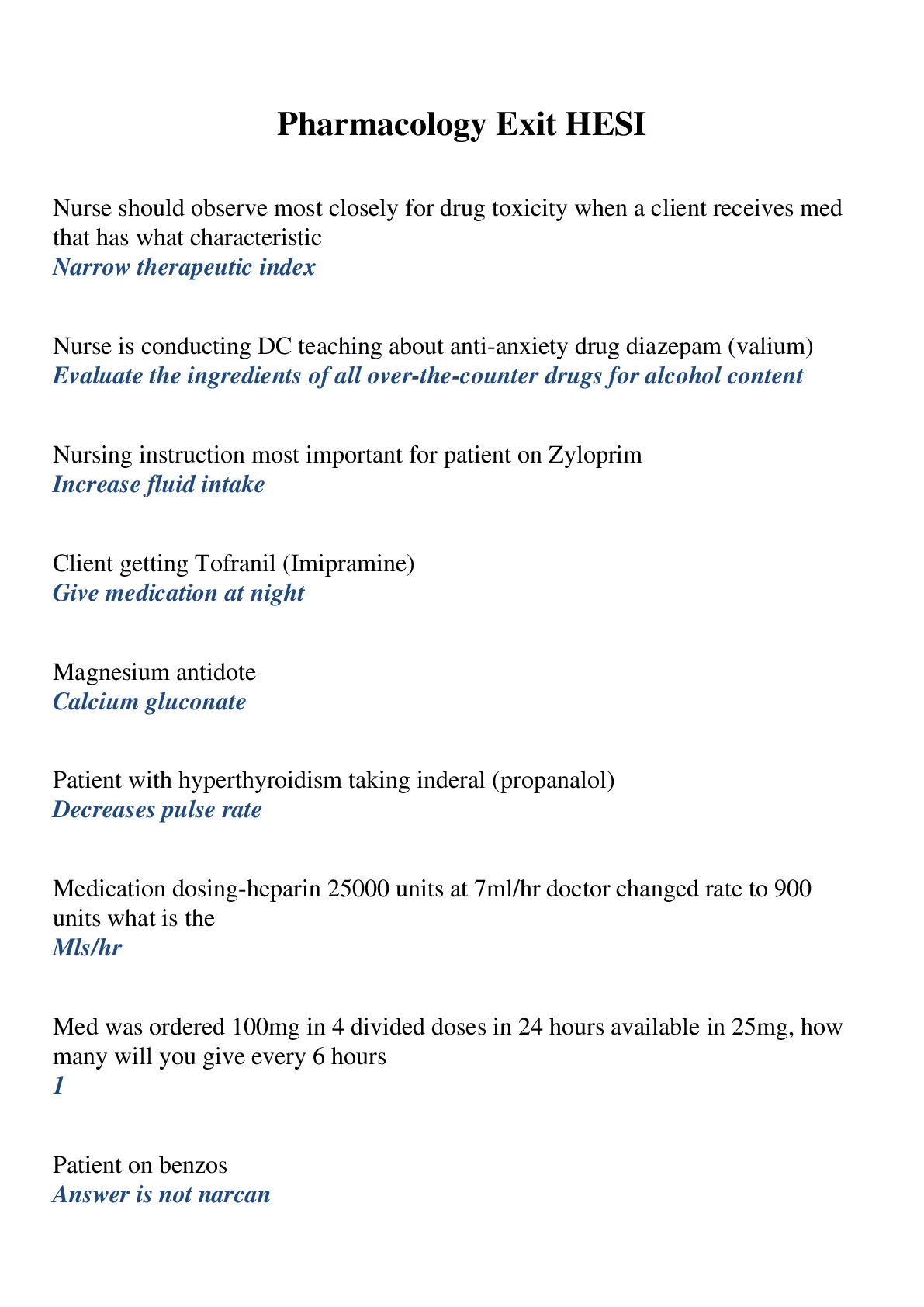
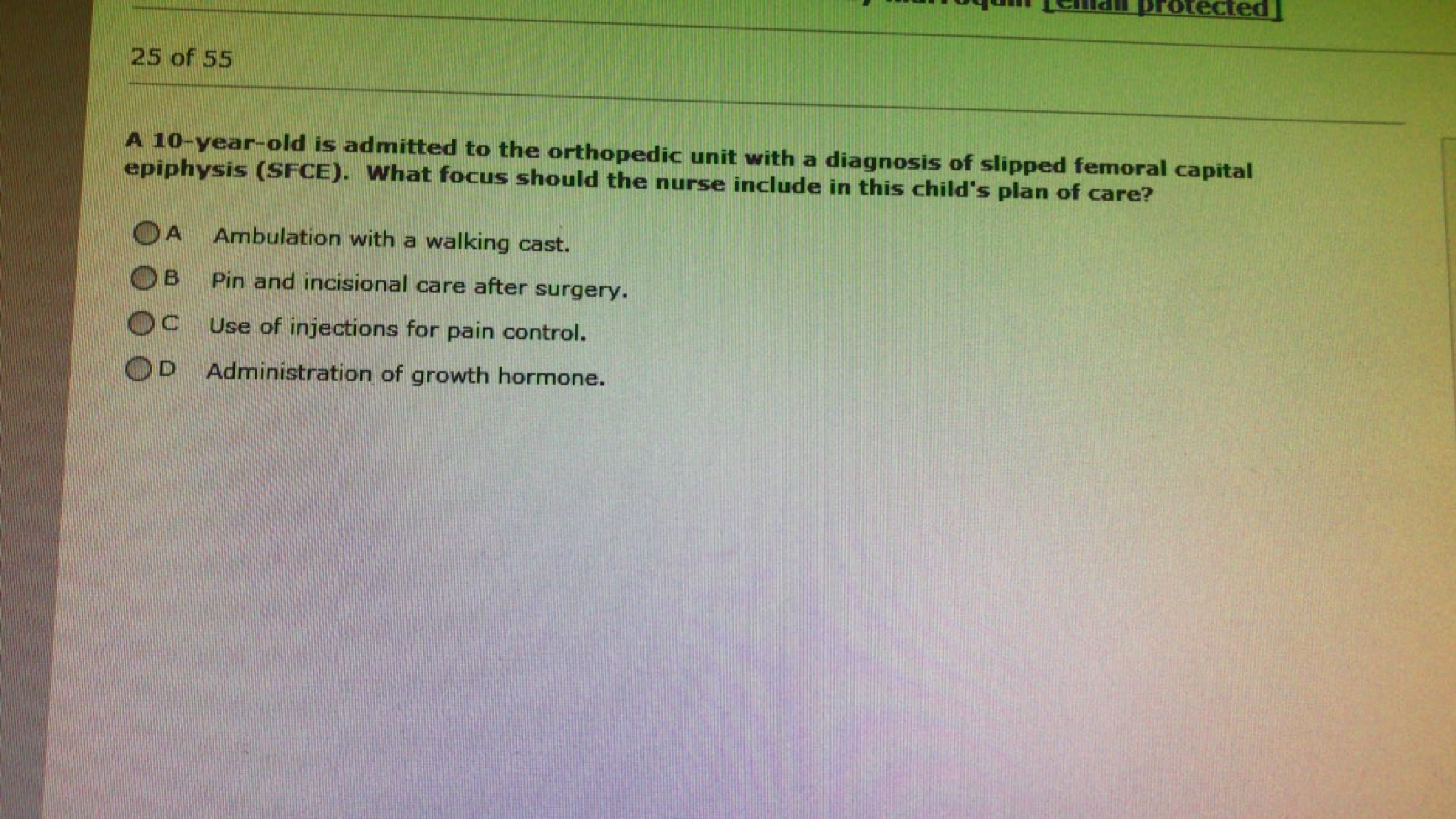
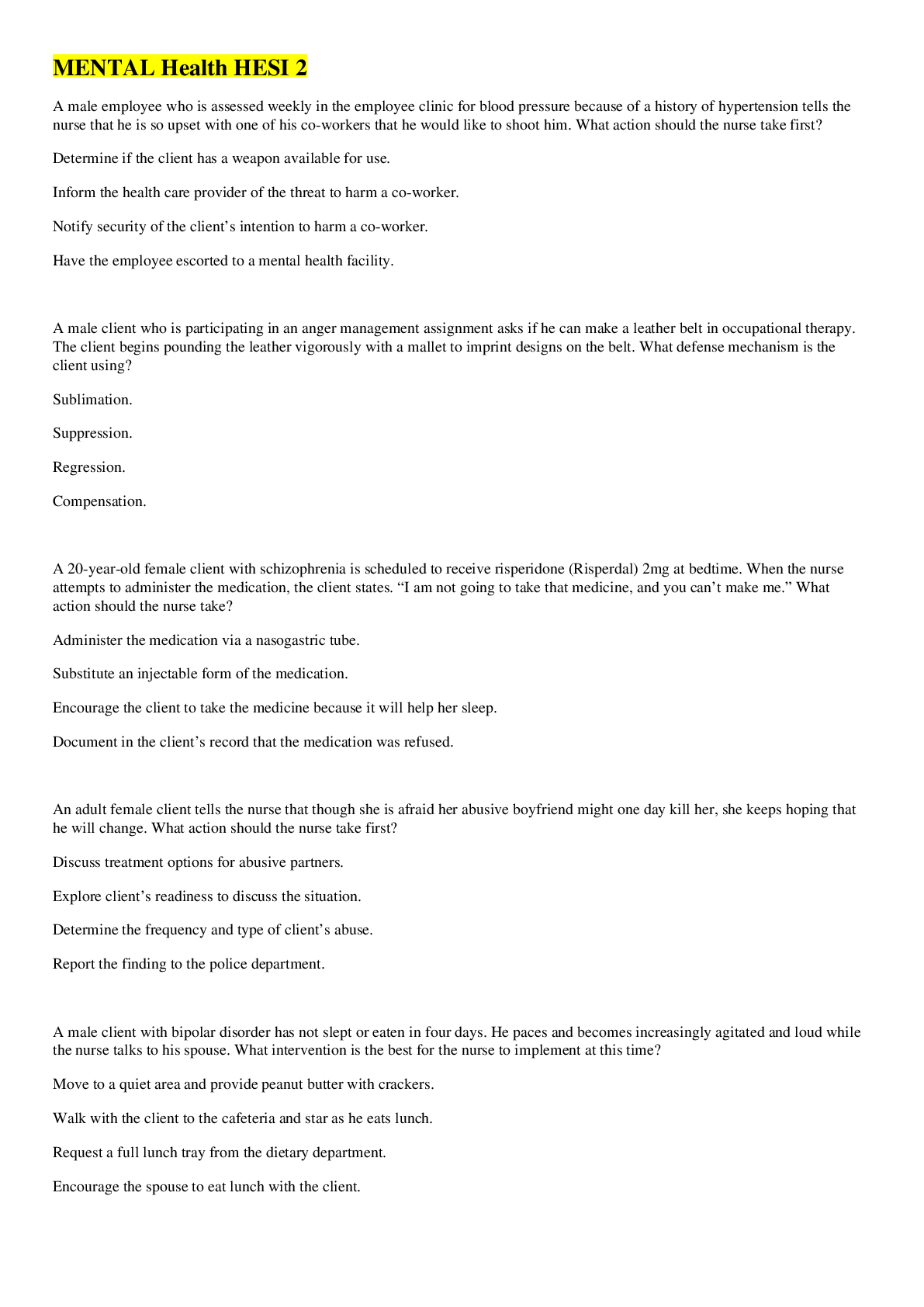
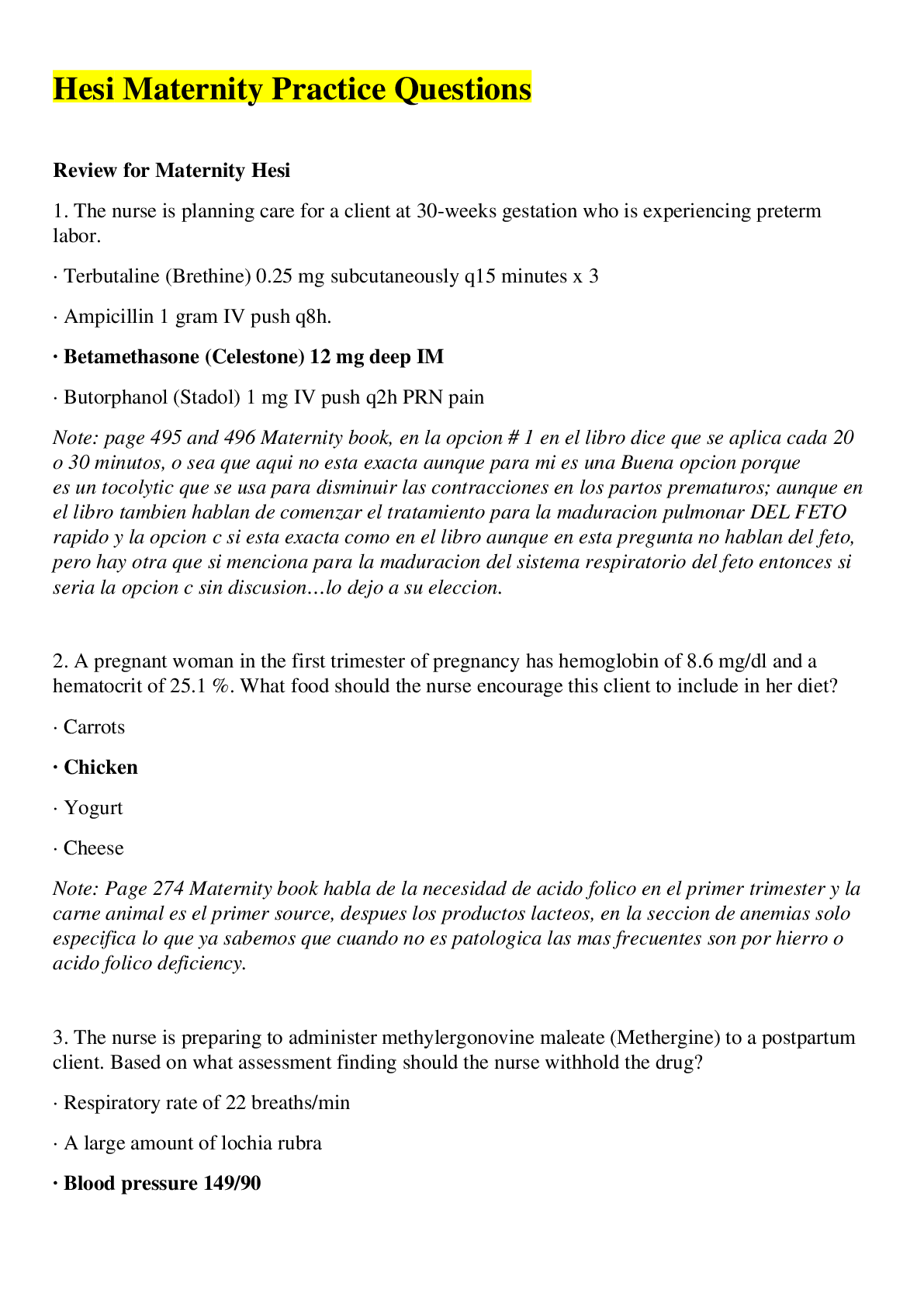
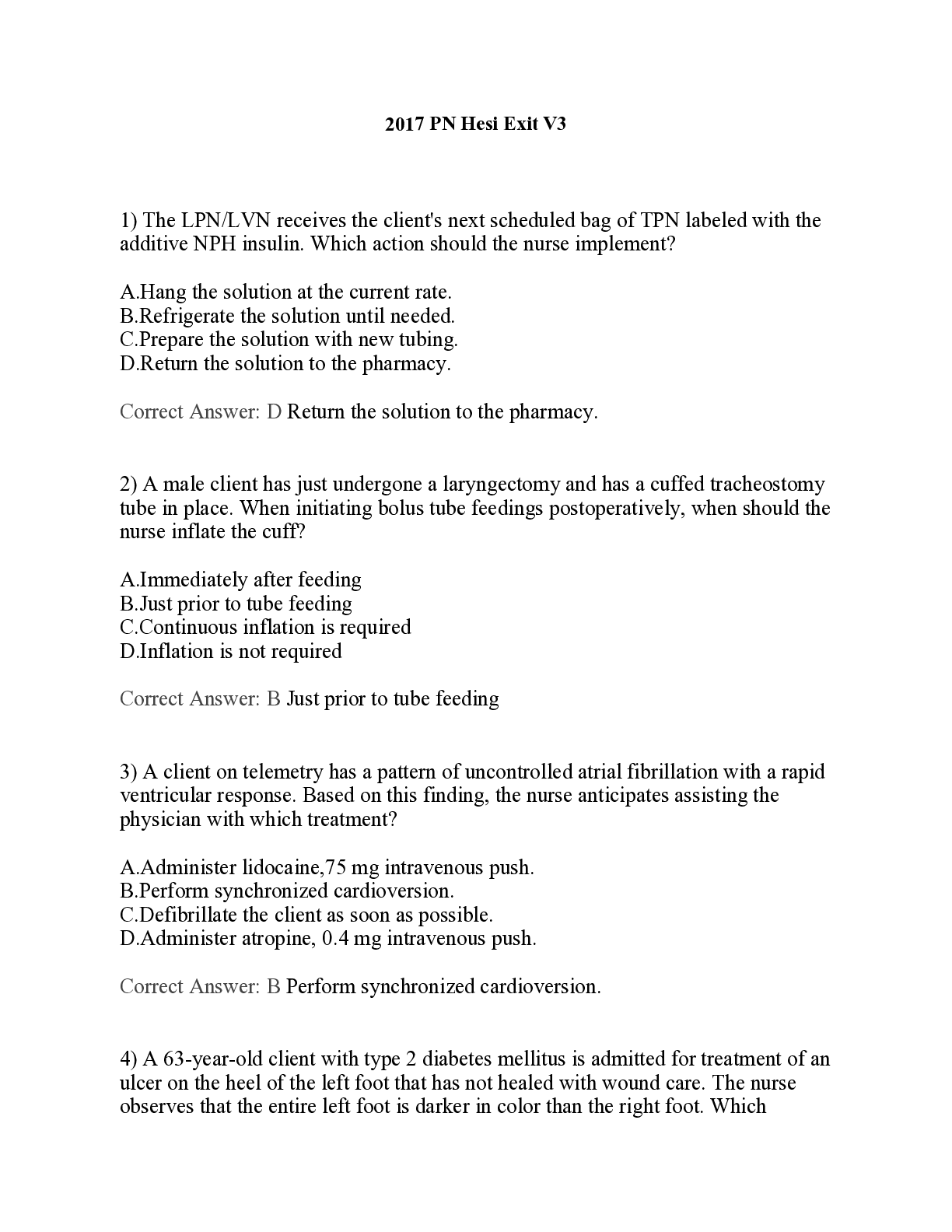
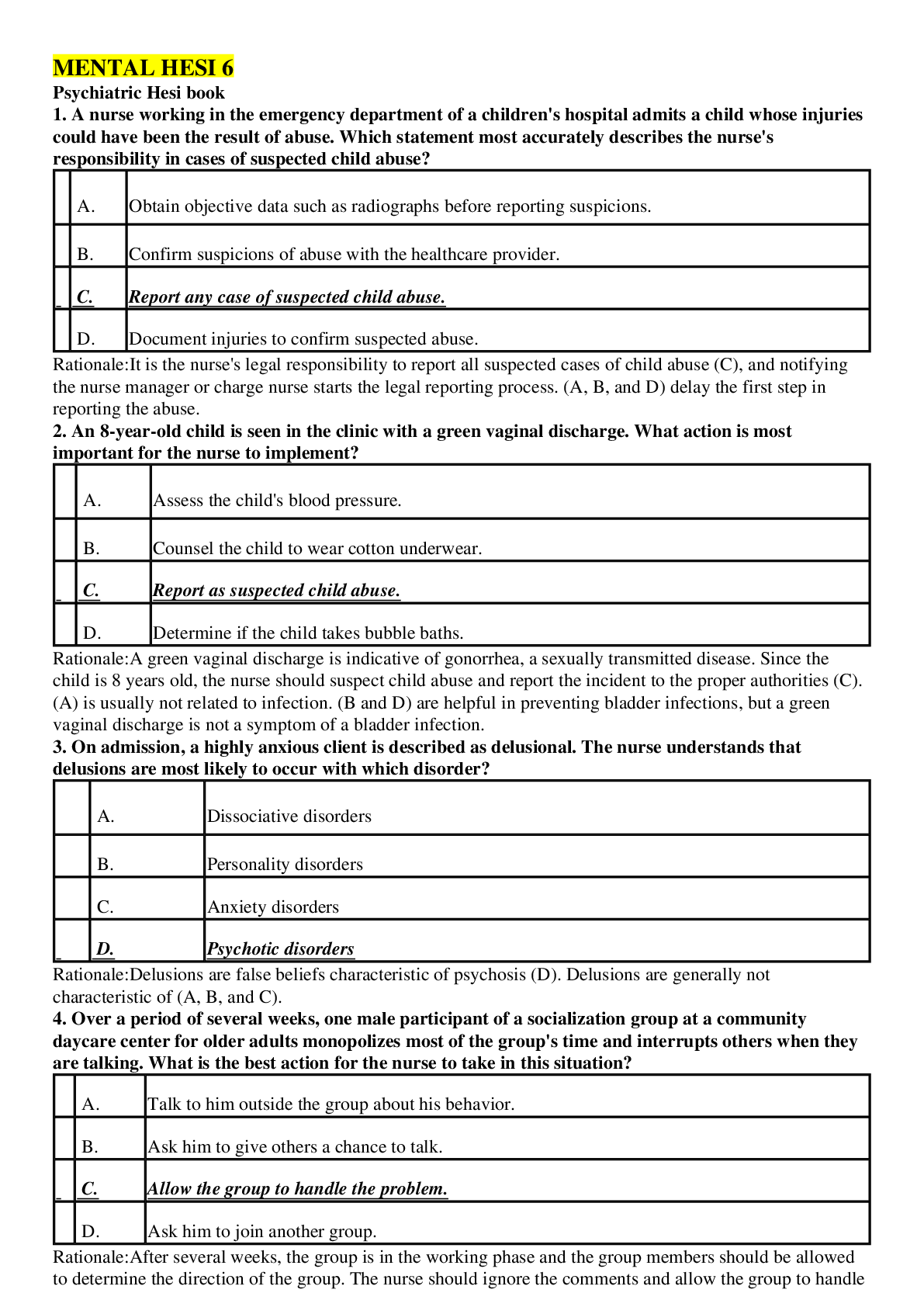
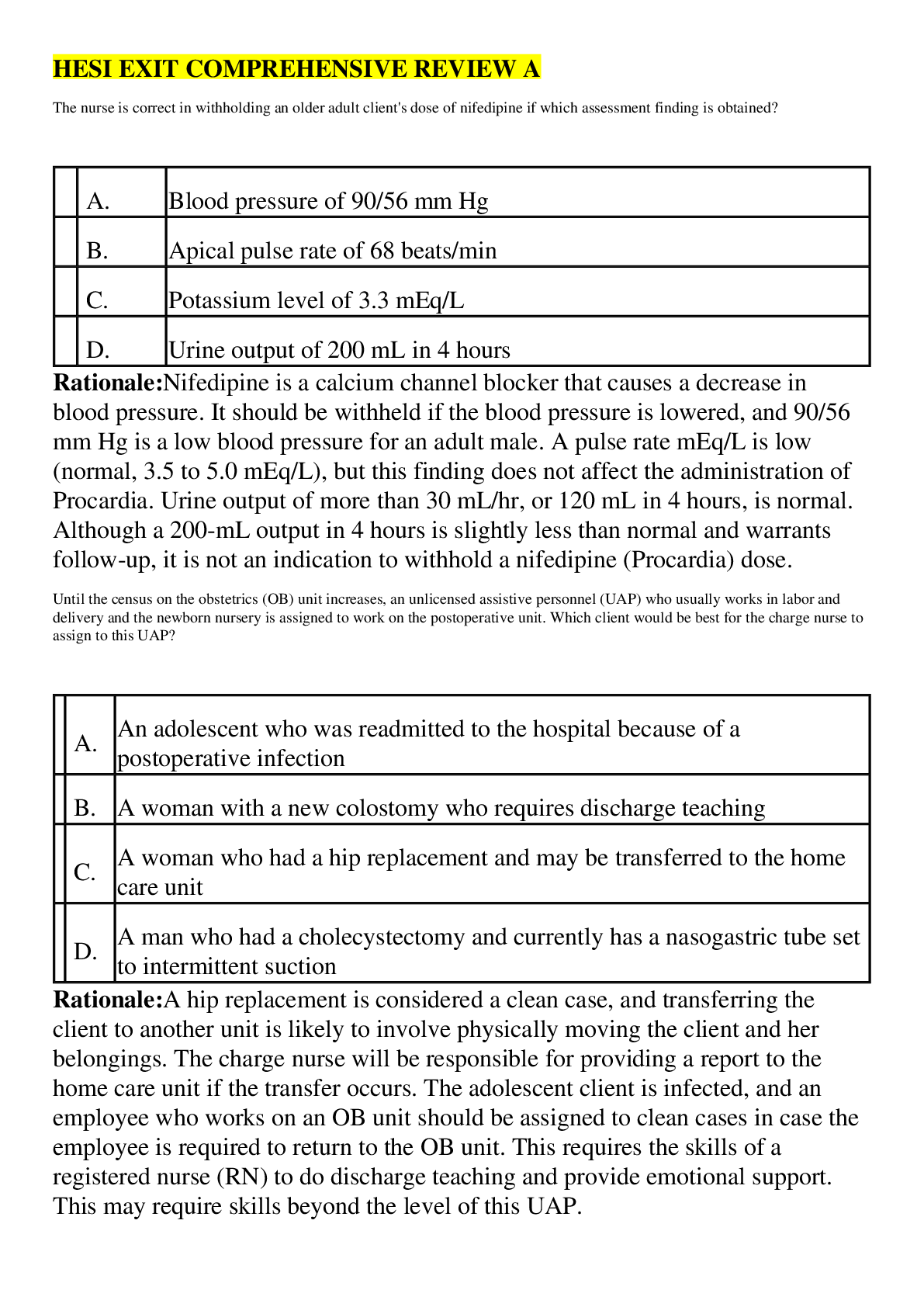
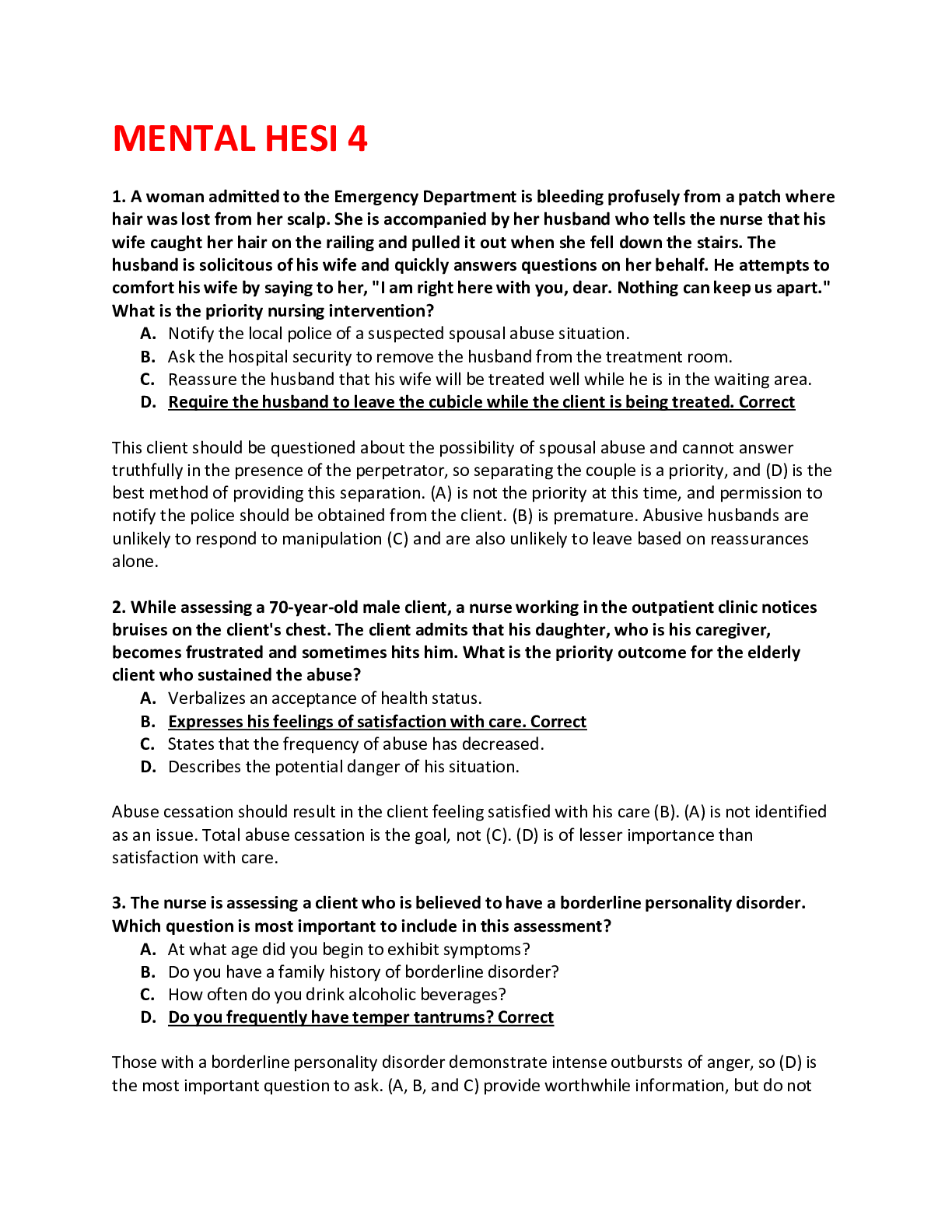
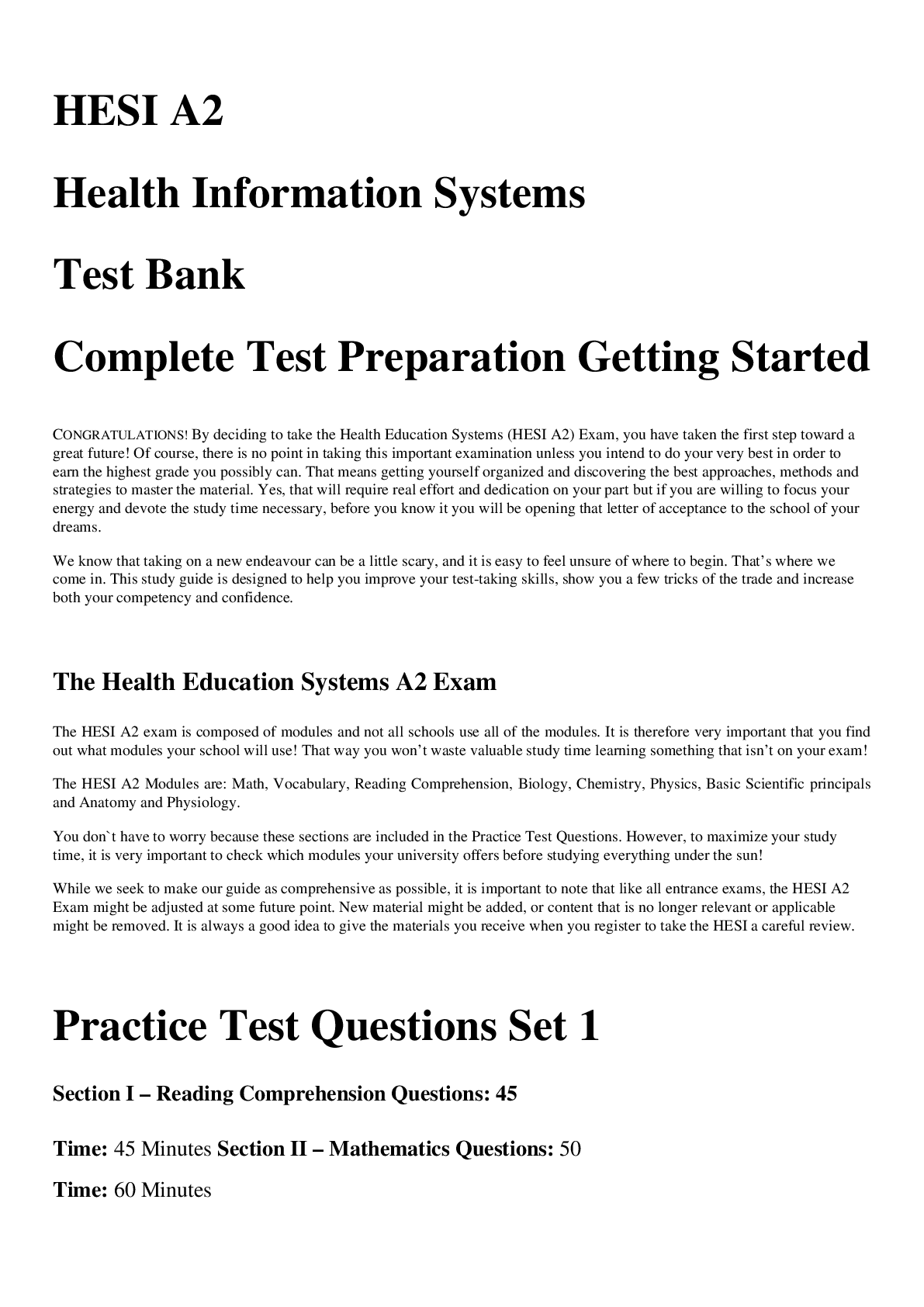
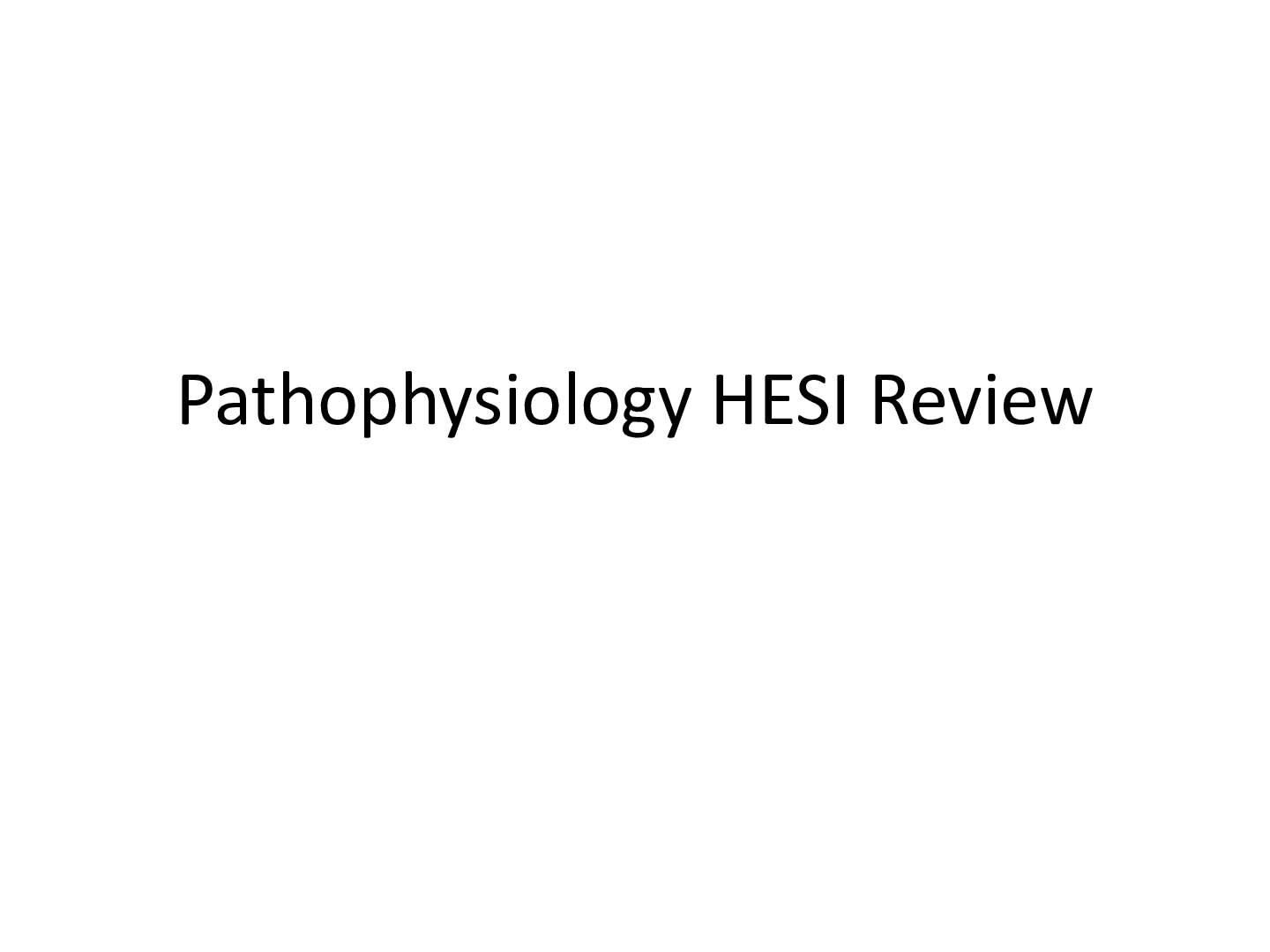
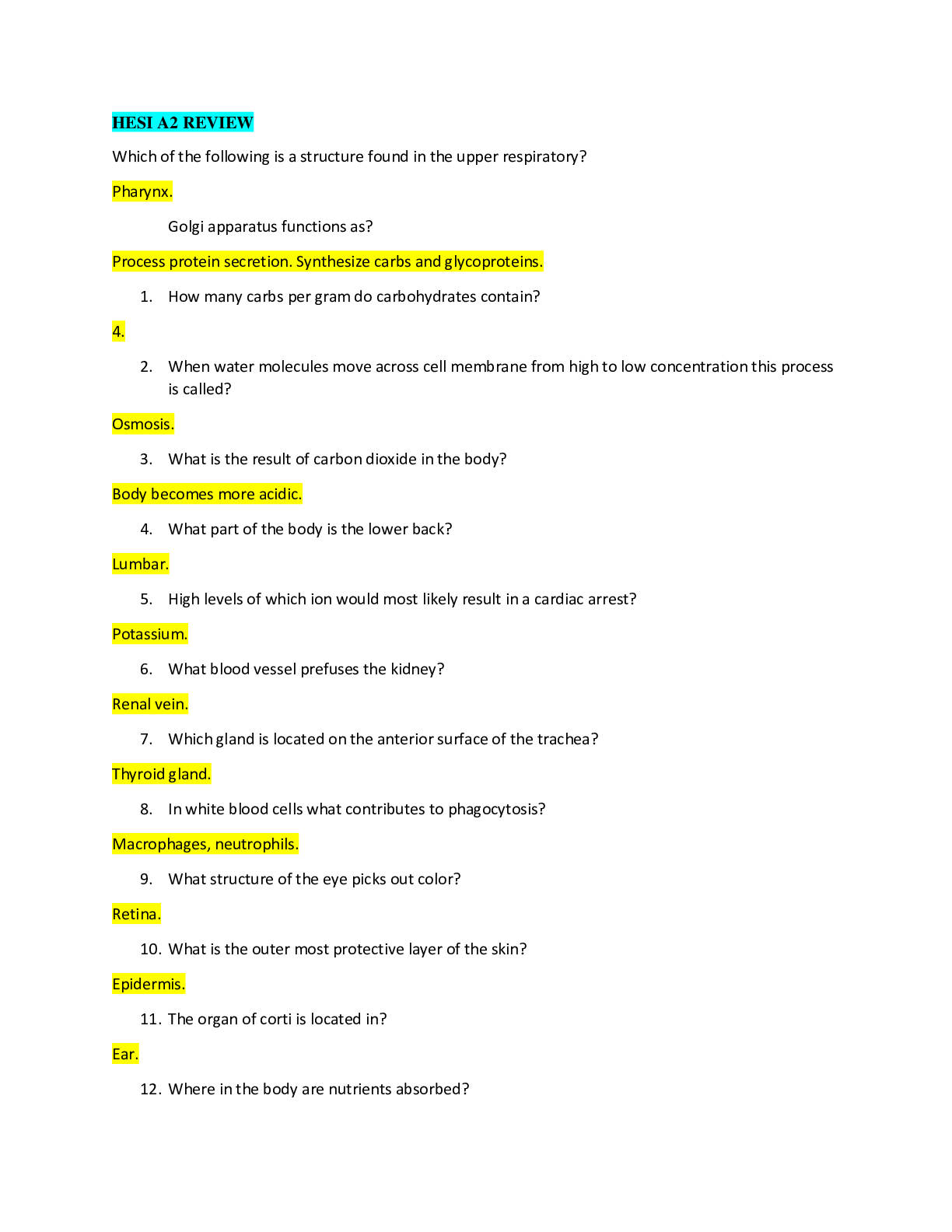
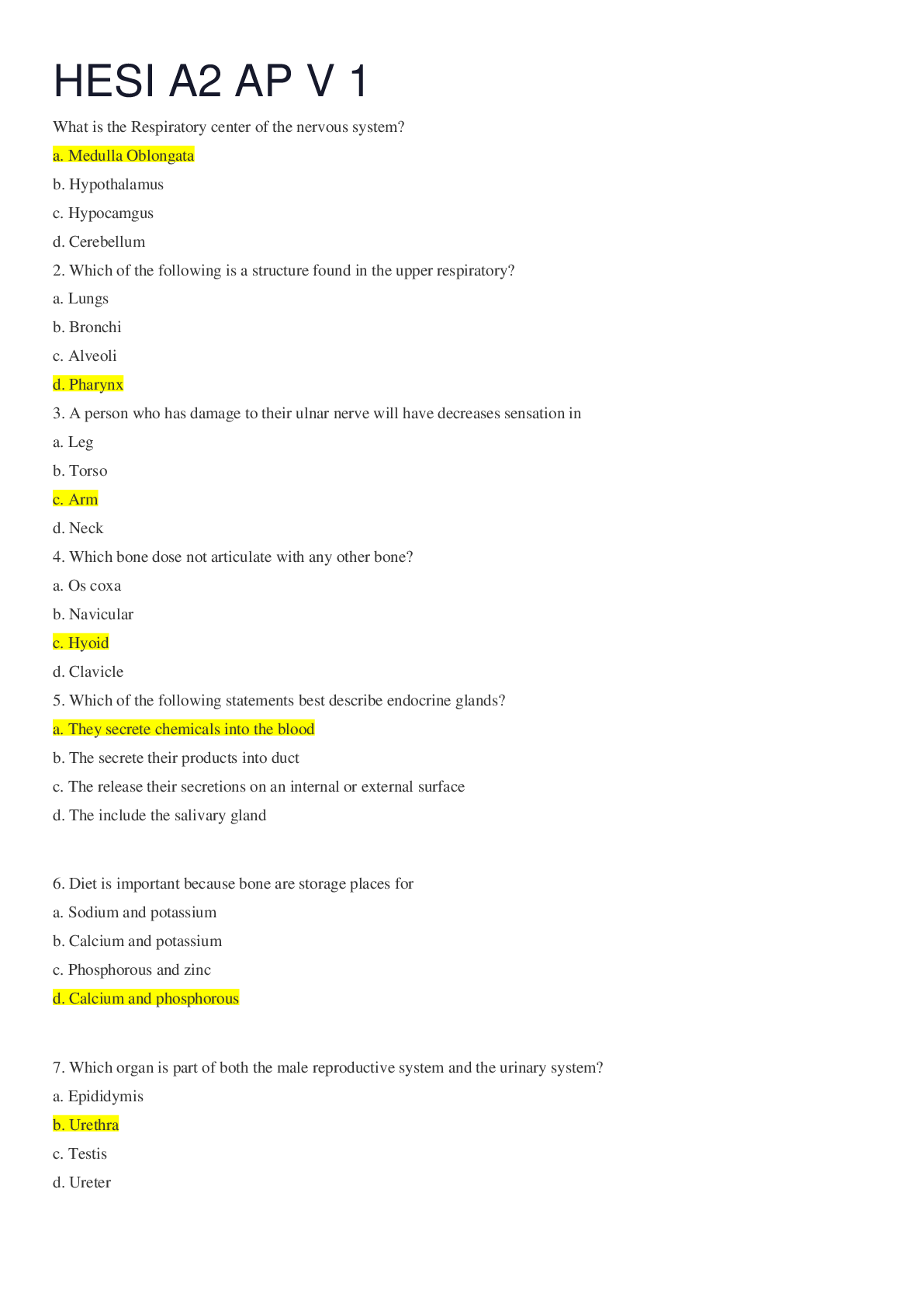


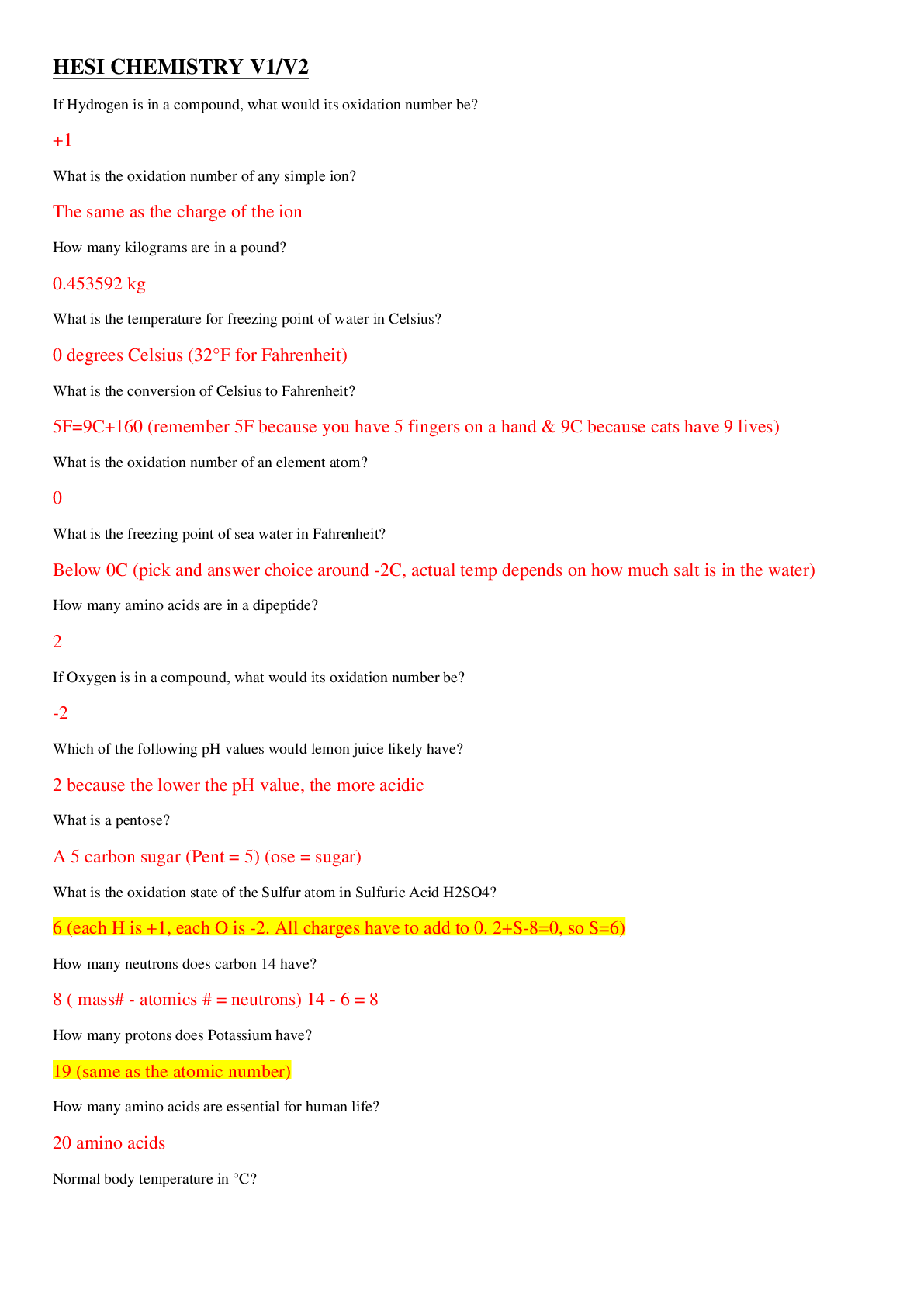


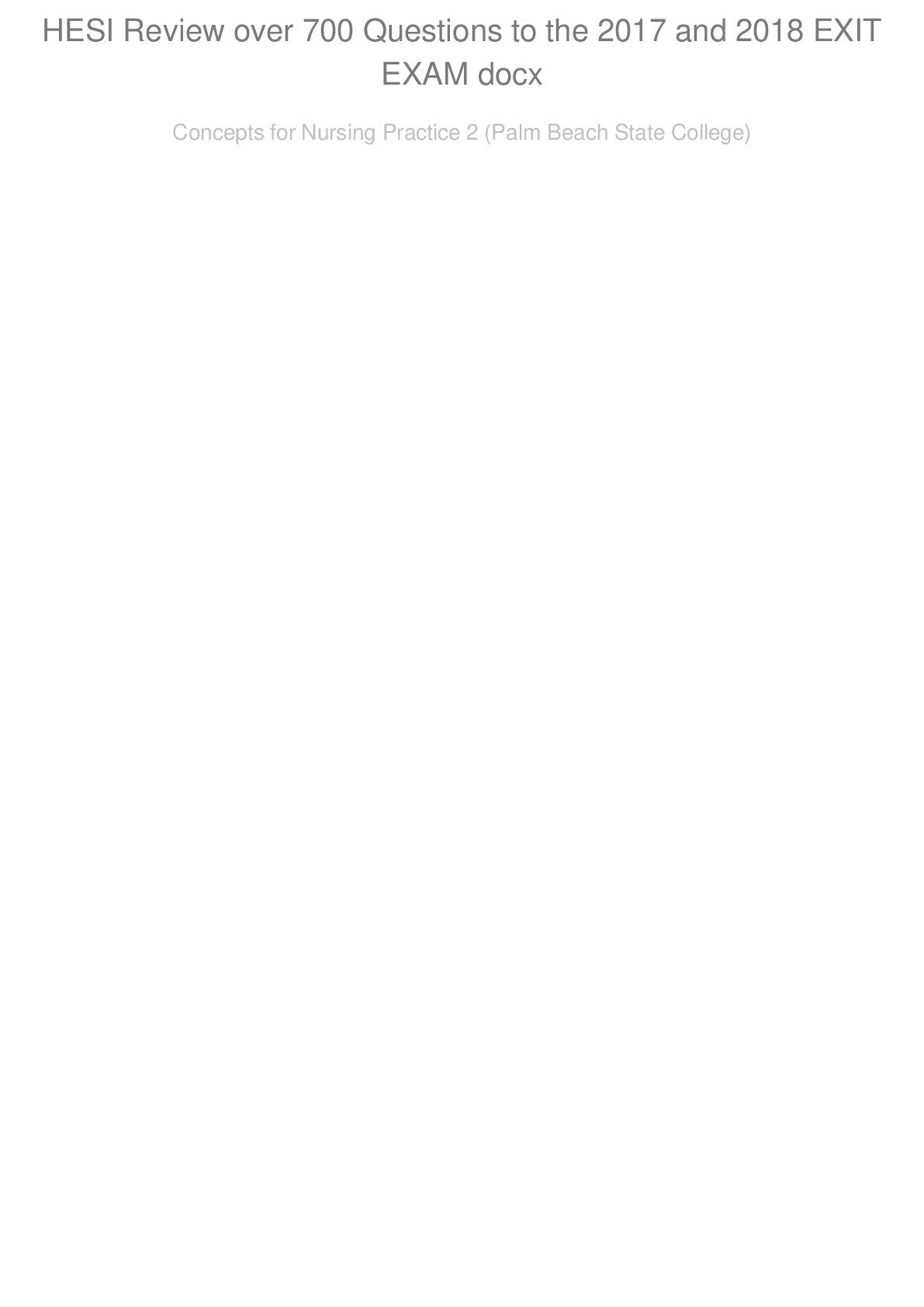

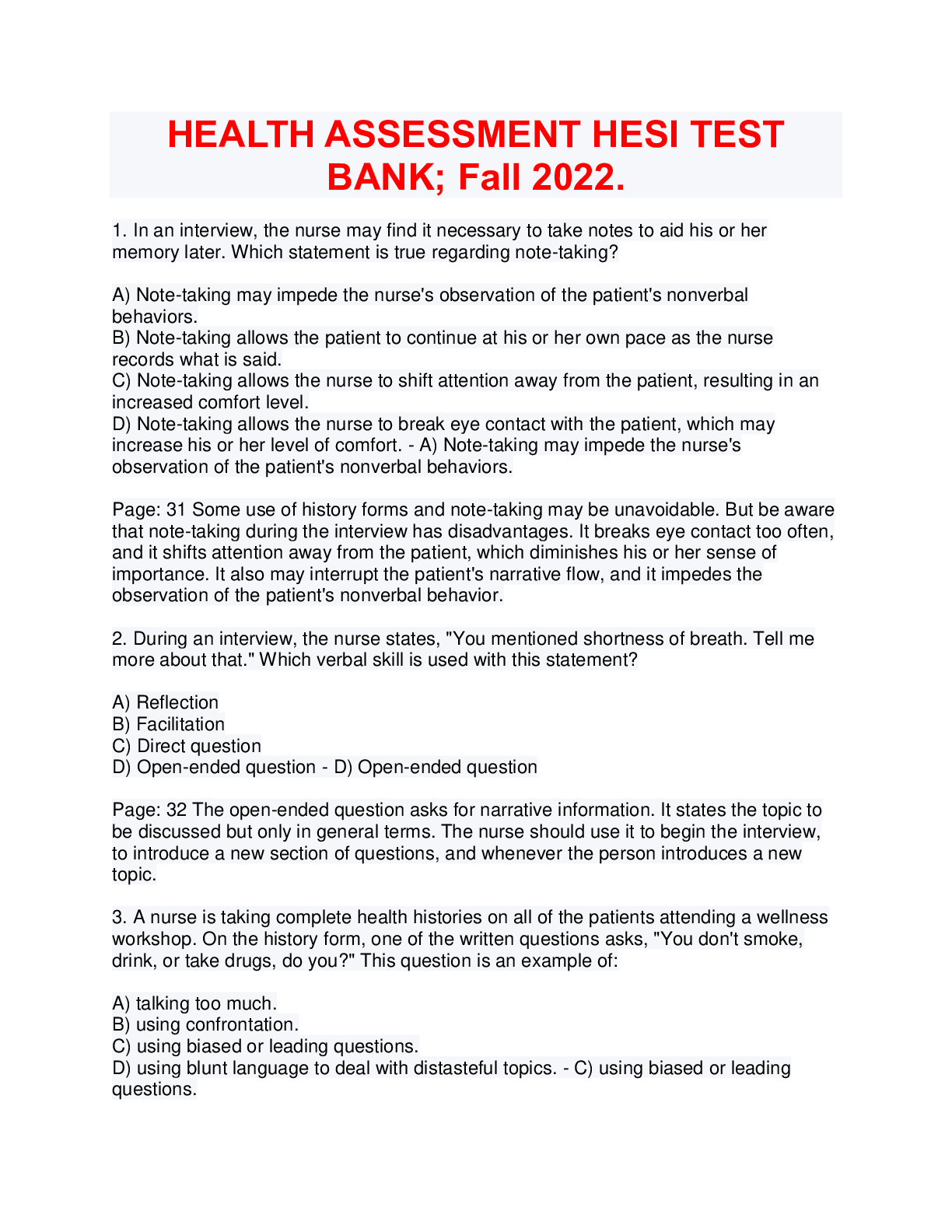
 Practice Test 2022.png)


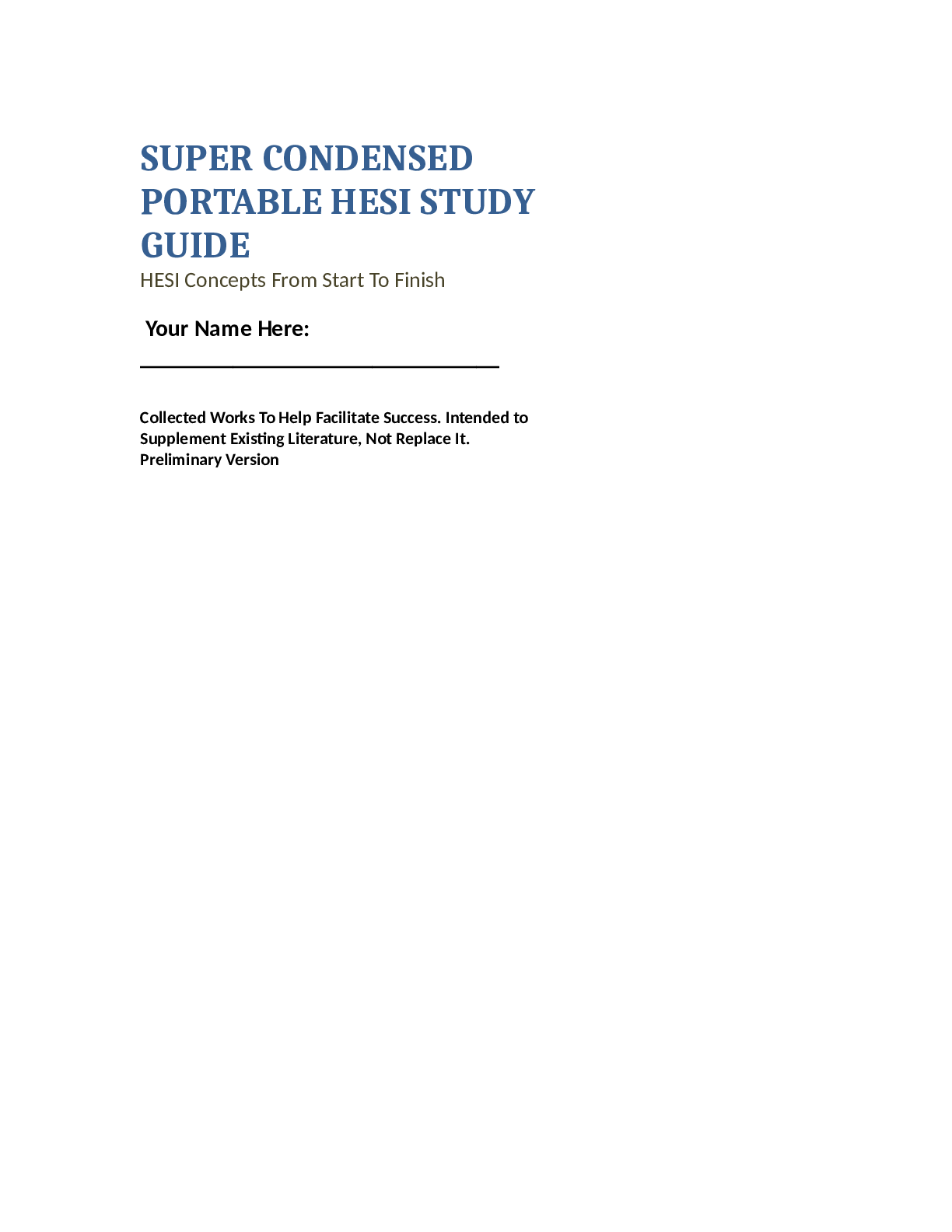




 (1).png)




